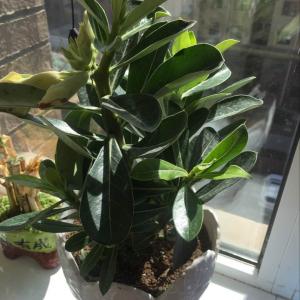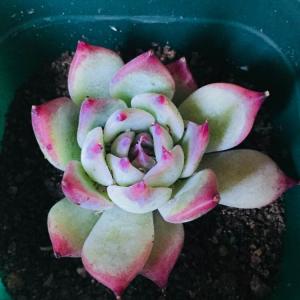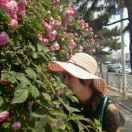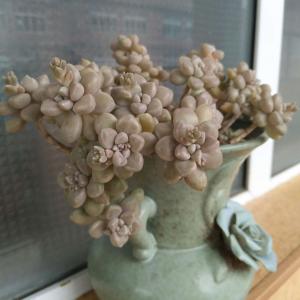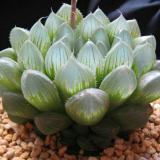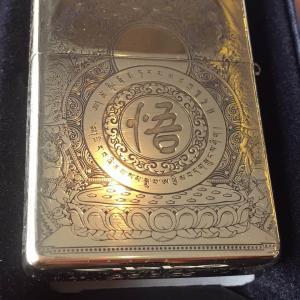文章
Miss Chen
2018年03月07日

Description: This herbaceous plant is a summer annual up to 4' tall that usually branches abundantly. The lanky stems are erect, ascending, or sprawling (especially the latter if they become entangled with vines). In addition, the stems are light green, glabrous or sparingly white-mealy, and terete or somewhat angular; smaller stems are often finely striated (with many narrow ridges). The alternate leaves are up to 2½" long and 1/3" (8 mm.) across; the lower and middle leaves are narrowly lanceolate or lanceolate-oblong, while the upper leaves are linear-oblong or linear. The leaf margins are smooth or slightly undulate; some of the lower leaves may have 1 or 2 obtuse basal lobes. The upper surface of each leaf is medium to dark green and glabrous, while its lower surface has the same characteristics; however, some of the uppermost leaves may be slightly white-mealy on the lower surface. Each leaf has a prominent central vein, and some of the larger leaves may have a pair of lateral veins that are conspicuous. The slender petioles of the leaves are up to one-third the length of the blades.
The upper stems terminate in elongated panicles of flowers up to 6" long; these flowers are organized into tight clusters along the branches of each panicle. There are also non-terminal spikes of flowers that originate from the axils of the upper leaves. The branches of each inflorescence are more or less white-mealy. Each flower is up to 1/8" (3 mm.) across, consisting of 5 sepals, 5 stamens, no petals, and a pair of short styles above the ovary. The sepals are green, yellowish green, or purplish green, and more or less white-mealy. The blooming period occurs from mid-summer into the fall and can last 1-2 months for a colony of plants. The flowers are cross-pollinated by the wind; in the absence of cross-pollination, they are self-pollinating. Afterward, each flower is replaced a single small seed about 1 mm. across; the persistent sepals barely cover the upper sides of this seed. Each seed is flattened and round; it is covered by a thin papery membrane that is easy to remove. Once this membrane is removed, the surface of the seed is smooth, shiny, and black. The root system consists of a branching taproot. This plant reproduces by reseeding itself.

Cultivation: The preference is partial sun or dappled sunlight, moist to dry-mesic conditions, and soil that contains loam, clay-loam, or stony material. The size and growth habit of this plant is variable, depending on environmental conditions.
Range & Habitat: The native Woodland Goosefoot occurs occasionally throughout Illinois (see Distribution Map). However, populations of this species may be declining. Habitats include open woodlands, woodland borders, thickets, rocky bluffs, and partially shaded roadsides. Disturbance that reduces the overhead tree canopy probably benefits populations of this plant in wooded areas.

Faunal Associations: Caterpillars of the skippers Pholisora catullus (Common Sootywing) and Staphylus hayhurstii (Hayhurst's Scallopwing) feed on the foliage of Chenopodium spp. (goosefoot species), as do the caterpillars of the moths Amyna octo (Eight-Spot), Blepharomastix ranalis (Hollow-spotted Snout Moth), Emmelina monodactyla (Common Plume Moth), and Grammia virgo (Virgin Tiger Moth). Other insects that feed on Chenopodium spp. (goosefoot species) include Chaetocnema concinna (Brassy Flea Beetle), Disonycha triangularis (Three-spotted Flea Beetle), Erynephala puncticollis (Beet Leaf Beetle), maggots of Pegomya hyosyami (Spinach Leafminer), Hayhurstia atriplicis (Chenopodium Aphid), and Pemphigus populivenae (Sugar Beet Root Aphid). Some gamebirds and many granivorous songbirds eat the seeds of goosefoots (see the Bird Table for a listing of these species). Livestock (e.g., pigs & sheep) eat the foliage of goosefoot species; young plants are occasionally eaten by rabbits.
Photographic Location: A thicket near a little-used railroad in Urbana, Illinois. To some extent, neighboring vines smothered this plant and caused its stems to sprawl.

Comments: Woodland Goosefoot is one of the few Chenopodium spp. (goosefoot species) that is native to Illinois. This plant is rather weedy in appearance, but it shouldn't be destroyed unnecessarily. In general, the different species of Goosefoots are difficult to distinguish from each other. Woodland Goosefoot differs from the others by the following combination of characteristics: 1) It has narrow lanceolate-oblong leaves, 2) the lower surface of its leaves is usually as dark and glabrous as the upper surface, and 3) the thin papery membranes covering its seeds are easy to remove. Other goosefoots have wider leaves, and/or the lower surface of their leaves is more pale and white-mealy, and/or the thin papery membranes covering their seeds are persistent and difficult to remove. Other goosefoots with narrow leaves (e.g., Chenopodium lanceolatum, Chenopodium dessicatum, and Chenopodium pratericola) usually occur in sunnier habitats than Woodland Goosefoot. However, the lower surface of their leaves is conspicuously white-mealy. Detailed descriptions and illustrations of the various goosefoots in Illinois can be found in Mohlenbrock (2001).
The upper stems terminate in elongated panicles of flowers up to 6" long; these flowers are organized into tight clusters along the branches of each panicle. There are also non-terminal spikes of flowers that originate from the axils of the upper leaves. The branches of each inflorescence are more or less white-mealy. Each flower is up to 1/8" (3 mm.) across, consisting of 5 sepals, 5 stamens, no petals, and a pair of short styles above the ovary. The sepals are green, yellowish green, or purplish green, and more or less white-mealy. The blooming period occurs from mid-summer into the fall and can last 1-2 months for a colony of plants. The flowers are cross-pollinated by the wind; in the absence of cross-pollination, they are self-pollinating. Afterward, each flower is replaced a single small seed about 1 mm. across; the persistent sepals barely cover the upper sides of this seed. Each seed is flattened and round; it is covered by a thin papery membrane that is easy to remove. Once this membrane is removed, the surface of the seed is smooth, shiny, and black. The root system consists of a branching taproot. This plant reproduces by reseeding itself.

Cultivation: The preference is partial sun or dappled sunlight, moist to dry-mesic conditions, and soil that contains loam, clay-loam, or stony material. The size and growth habit of this plant is variable, depending on environmental conditions.
Range & Habitat: The native Woodland Goosefoot occurs occasionally throughout Illinois (see Distribution Map). However, populations of this species may be declining. Habitats include open woodlands, woodland borders, thickets, rocky bluffs, and partially shaded roadsides. Disturbance that reduces the overhead tree canopy probably benefits populations of this plant in wooded areas.

Faunal Associations: Caterpillars of the skippers Pholisora catullus (Common Sootywing) and Staphylus hayhurstii (Hayhurst's Scallopwing) feed on the foliage of Chenopodium spp. (goosefoot species), as do the caterpillars of the moths Amyna octo (Eight-Spot), Blepharomastix ranalis (Hollow-spotted Snout Moth), Emmelina monodactyla (Common Plume Moth), and Grammia virgo (Virgin Tiger Moth). Other insects that feed on Chenopodium spp. (goosefoot species) include Chaetocnema concinna (Brassy Flea Beetle), Disonycha triangularis (Three-spotted Flea Beetle), Erynephala puncticollis (Beet Leaf Beetle), maggots of Pegomya hyosyami (Spinach Leafminer), Hayhurstia atriplicis (Chenopodium Aphid), and Pemphigus populivenae (Sugar Beet Root Aphid). Some gamebirds and many granivorous songbirds eat the seeds of goosefoots (see the Bird Table for a listing of these species). Livestock (e.g., pigs & sheep) eat the foliage of goosefoot species; young plants are occasionally eaten by rabbits.
Photographic Location: A thicket near a little-used railroad in Urbana, Illinois. To some extent, neighboring vines smothered this plant and caused its stems to sprawl.

Comments: Woodland Goosefoot is one of the few Chenopodium spp. (goosefoot species) that is native to Illinois. This plant is rather weedy in appearance, but it shouldn't be destroyed unnecessarily. In general, the different species of Goosefoots are difficult to distinguish from each other. Woodland Goosefoot differs from the others by the following combination of characteristics: 1) It has narrow lanceolate-oblong leaves, 2) the lower surface of its leaves is usually as dark and glabrous as the upper surface, and 3) the thin papery membranes covering its seeds are easy to remove. Other goosefoots have wider leaves, and/or the lower surface of their leaves is more pale and white-mealy, and/or the thin papery membranes covering their seeds are persistent and difficult to remove. Other goosefoots with narrow leaves (e.g., Chenopodium lanceolatum, Chenopodium dessicatum, and Chenopodium pratericola) usually occur in sunnier habitats than Woodland Goosefoot. However, the lower surface of their leaves is conspicuously white-mealy. Detailed descriptions and illustrations of the various goosefoots in Illinois can be found in Mohlenbrock (2001).
0
0
心扉的猫咪
2018年03月06日

2018.3.6
1.单瓣长寿继续开开开
2.蟹爪兰开始长新叶
3.小拼盘
4.冻的不行的海棠缓了过来
5.紫色四叶草开始苏醒
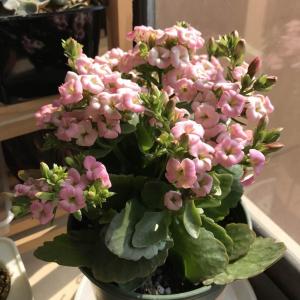
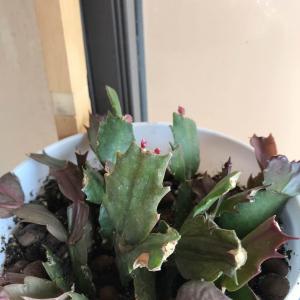
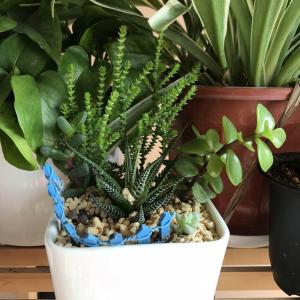
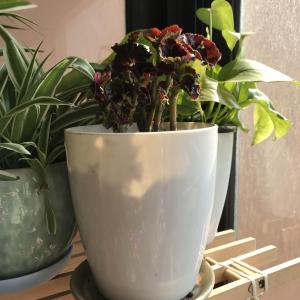
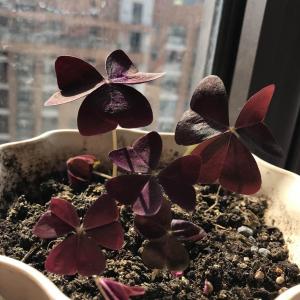
1.单瓣长寿继续开开开
2.蟹爪兰开始长新叶
3.小拼盘
4.冻的不行的海棠缓了过来
5.紫色四叶草开始苏醒





1
0
心扉的猫咪:@lrgarden 春天真美好 万物苏醒
lrgarden:春天来了😄
心扉的猫咪
2018年03月06日

2018.3.6
1.蓝雪苗长势不错,欢了大盆
2.文竹移入了单间,爆出新芽
3.发财树之前都掉光了叶子,今日开始抽新枝
4.三色堇长出新花苞
5.瓜叶菊新买的,看看花而已
6.捡回家的紫罗兰,随便种种
7.不知是小丽花还是大丽花,也是刚捡到的
8.前年的红色重瓣长寿,花苞出了一个多月了,还没开
9.仙客来好像长了虫子,用了药试试看
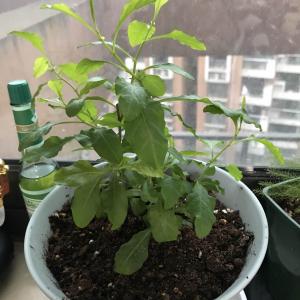
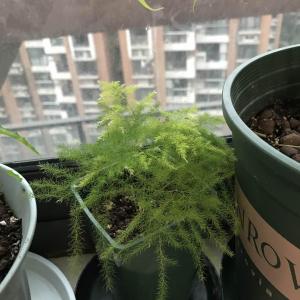
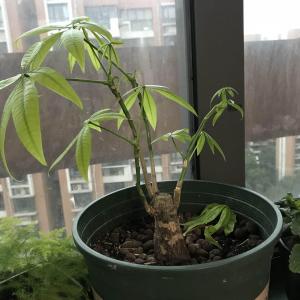
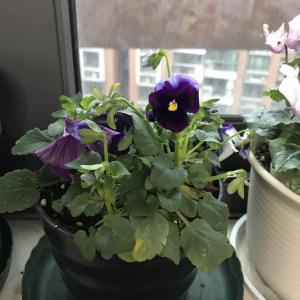
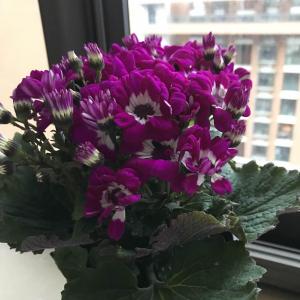
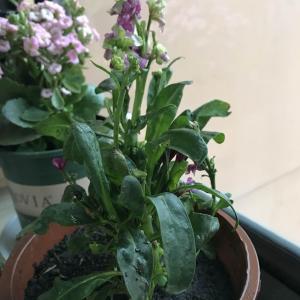
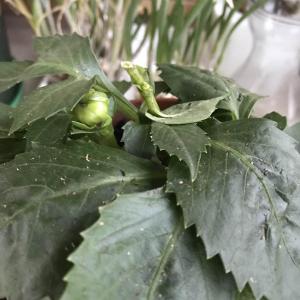
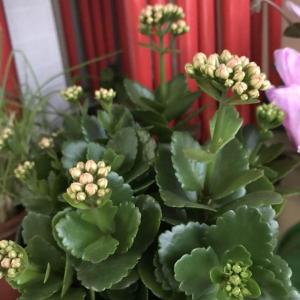

1.蓝雪苗长势不错,欢了大盆
2.文竹移入了单间,爆出新芽
3.发财树之前都掉光了叶子,今日开始抽新枝
4.三色堇长出新花苞
5.瓜叶菊新买的,看看花而已
6.捡回家的紫罗兰,随便种种
7.不知是小丽花还是大丽花,也是刚捡到的
8.前年的红色重瓣长寿,花苞出了一个多月了,还没开
9.仙客来好像长了虫子,用了药试试看









0
0
文章
Miss Chen
2018年03月04日

Description: This wildflower is an annual or biennial that initially forms a rosette of basal leaves, followed by a much-branched flowering plant that is about 1-4' tall. The basal leaves and opposite leaves of the flowering plant are similar to each other, except that the former are longer in length and less deltoid in outline. The stems are light green to pale purplish green, terete, and moderately to densely covered with spreading glandular hairs. The opposite leaves are up to 3" long and 2" across; they are medium green to purplish green, lanceolate to ovate-deltoid in outline, and bipinnatifid with 3-7 pairs of primary lobes. Usually, the opposite leaves are short-hairy, especially on their lower surfaces. They are mostly sessile, although lower leaves have short petioles. The outer stems terminate in small clusters of 1-3 flowers. Individual flowers are 1¼–1½" long; each flower has a trumpet-shaped yellow corolla, a short green calyx with 5 teeth, 4 stamens, and a single slender style. The calyx is covered with glandular hairs and its teeth are pinnatifid. Along the outer rim of the corolla, there are 5 rounded lobes; they are widely spreading. Within the corolla, there are 1-3 thick lines of reddish brown streaks or dots. The pedicels of the flowers are ½–2" long and glandular hairy. The blooming period occurs from late summer to early fall and lasts about a month. On an individual plant, several flowers can be in bloom at the same time. There is no noticeable floral scent. Each flower is replaced by an ovoid seed capsule about ½" long that has a slender beak at its apex. Each capsule contains many seeds. The root system consists of a taproot and small feeder roots; the latter parasitize the roots of Oak trees for water and nutrients. This wildflower reproduces by reseeding itself.

Cultivation: The preference is partial to full sun, mesic to dry conditions, and sandy soil. It is desirable that a host plant (e.g., an Oak) be present in the vicinity.
Range & Habitat: The native Fern-Leaf False Foxglove is occasional in sandy areas of NE Illinois and rare to absent elsewhere in the state (see Distribution Map). Habitats include sandy upland forests, sandy upland savannas, sandy thickets, and stabilized sand dunes near Lake Michigan. In all of these habitats, Oak trees are typically present, particularly Quercus velutina (Black Oak).
Faunal Associations: The flowers are cross-pollinated primarily by bumblebees, which suck nectar and collect pollen. Other possible floral visitors include other long-tongued bees and the Ruby-Throated Hummingbird. The flea beetles Capraita circumdata and Kuschelina horni feed on Aureolaria spp. (False Foxgloves). The caterpillars of a Noctuid Moth, Rhodoecia aurantiago, bores into the seed capsules of these species, and the aphid Aphis gerardiae has been observed to suck juices from Fern-Leaf False Foxglove specifically.
Photographic Location: A sandy Oak savanna at the Hooper Branch Savanna Nature Preserve in Iroquois County, Illinois.
Comments: This wildflower has attractive flowers and ornamental foliage. Fern-Leaf False Foxglove differs from other Aureolaria spp. (False Foxgloves) in Illinois by its bipinnatifid leaves, pinnatifid calyx teeth, and glandular hairs on its stems and pedicels. Other False Foxgloves in the state have simple or pinnatifid leaves, simple calyx teeth, and either non-glandular hairs or no hairs on its stems and pedicels. The flowers of Fern-Leaf False Foxglove are a little shorter (1½" or less) than the flowers of these other species, and it is usually more branched and bushy in appearance. Because of these distinctive characteristics, Fern-Leaf False Foxglove is easy to identify in the field. Across its range in the eastern United States, different varieties have been described.

Cultivation: The preference is partial to full sun, mesic to dry conditions, and sandy soil. It is desirable that a host plant (e.g., an Oak) be present in the vicinity.
Range & Habitat: The native Fern-Leaf False Foxglove is occasional in sandy areas of NE Illinois and rare to absent elsewhere in the state (see Distribution Map). Habitats include sandy upland forests, sandy upland savannas, sandy thickets, and stabilized sand dunes near Lake Michigan. In all of these habitats, Oak trees are typically present, particularly Quercus velutina (Black Oak).
Faunal Associations: The flowers are cross-pollinated primarily by bumblebees, which suck nectar and collect pollen. Other possible floral visitors include other long-tongued bees and the Ruby-Throated Hummingbird. The flea beetles Capraita circumdata and Kuschelina horni feed on Aureolaria spp. (False Foxgloves). The caterpillars of a Noctuid Moth, Rhodoecia aurantiago, bores into the seed capsules of these species, and the aphid Aphis gerardiae has been observed to suck juices from Fern-Leaf False Foxglove specifically.
Photographic Location: A sandy Oak savanna at the Hooper Branch Savanna Nature Preserve in Iroquois County, Illinois.
Comments: This wildflower has attractive flowers and ornamental foliage. Fern-Leaf False Foxglove differs from other Aureolaria spp. (False Foxgloves) in Illinois by its bipinnatifid leaves, pinnatifid calyx teeth, and glandular hairs on its stems and pedicels. Other False Foxgloves in the state have simple or pinnatifid leaves, simple calyx teeth, and either non-glandular hairs or no hairs on its stems and pedicels. The flowers of Fern-Leaf False Foxglove are a little shorter (1½" or less) than the flowers of these other species, and it is usually more branched and bushy in appearance. Because of these distinctive characteristics, Fern-Leaf False Foxglove is easy to identify in the field. Across its range in the eastern United States, different varieties have been described.
1
0
文章
Miss Chen
2018年03月04日

Description: This perennial herbaceous plant is 2½–4½' tall, sending up one or more leafy stems that are branched above. The central stem is more or less erect, while the lateral stems are ascending. All stems are light green to purple, terete, and moderately to densely pubescent. Pairs of opposite leaves occur along these stems, becoming gradually smaller in size as they ascend. These leaves are 2½–7" long, ¾–2½" across, lanceolate to elliptic in outline, and shallowly to deeply pinnatifid, although the lowest leaves may be bipinnatifid, while the uppermost leaves may be nearly unlobed. The lobes of the leaves are irregular in size and shape; they are often lanceolate, triangular, triangular-curved (shaped like a cresting wave), or rounded. In addition, the leaf margins may be undulate and they may have a few coarse teeth. The leaf surface is yellow green, medium to dark green, or purplish green; the lower leaf surface is slightly more pale than the upper leaf surface. In addition, the leaf surface is sparsely covered with very short hairs.
The leaves are nearly sessile to short-petioled; their petioles are slightly winged and sparsely short-pubescent. The central stem and lateral stems terminate in racemes of flowers with leafy bracts that are about ½–1¼' long. The leafy bracts are ¾–2½" long and ¼–¾" across; these bracts are lanceolate or elliptic in shape and they usually have 2 or more shallow to moderately deep lobes, although some bracts may lack lobes. Except for their smaller size and fewer lobes, the leafy bracts are similar to the leaves below the floral racemes. Individual flowers are about 1½–2¼" long, consisting of a large yellow corolla with 5 spreading lobes, a light green calyx with 5 ascending to spreading lobes, 4 stamens, and an ovary with a single slender style. The corolla is tubular-campanulate (tubular and bell-shaped) in shape, becoming wider towards its mouth; it has a hairless exterior. The lobes of the corolla are oval-orbicular in shape, slightly overlapping, and similar in size. The calyx tube is about ½–¾" long, campanulate in shape, finely ridged, and covered with short fine pubescence.

The lobes of the calyx are elliptic or lanceolate in shape, medium green, and sparsely covered with very short pubescence. The central stalks of the racemes and pedicels of the flowers are light green, terete, and pubescent. In addition, the pedicels are 3-8 mm. long and upturned when the flowers bloom, becoming somewhat longer afterwards when the seed capsules develop. The blooming period occurs from mid-summer to early autumn, lasting about 1–1½ months. There is no noticeable floral scent. Afterwards, the flowers are replaced by ovoid-globoid seed capsules about ½–¾" long that are brown and glabrous. The capsules eventually split open to release theirs seeds. These seeds are about 2 mm. long, ellipsoid-oblong in shape, somewhat flattened, and slightly winged. The root system consists of a caudex with fibrous roots, some of which attach themselves to the roots of trees in the white oak group, from which they withdraw water and nutrients. As a result, this plant is a hemiparasite (partially parasitic).

Cultivation: The preference is partial sun, mesic to dry conditions, sandy loam, clay-loam or rocky soil. The seeds should be planted near a host plant (a tree in the white oak group). This plant will not harm its host plant to any significant degree if the latter is larger in size than a sapling.
Range & Habitat: Large-flowered False Foxglove (Aureolaria grandiflora) is occasional in western and northern Illinois, while in the rest of the state it is uncommon or absent (see Distribution Map). Illinois lies along the eastern range-limit of this plant. Its range occurs primarily in north-central and south-central USA. Habitats include upland oak savannas, edges of limestone glades, thinly wooded bluffs, open woodlands, woodland borders along roadsides, and wooded slopes at the edges of fens. This plant is found in habitats where trees in the white oak group are present in slightly disturbed to high quality natural areas.

Faunal Associations: The nectar and pollen of the flowers attract primarily bumblebees. Other floral visitors include the Ruby-throated Hummingbird, long-horned bees (Melissodes spp.), leaf-cutting bees (Megachile spp.), Halictid bees (Lasioglossum spp.), and Syrphid flies (Robertson, 1929). Syrphid flies, which feed on the pollen, are unlikely to be effective at cross-pollinating the flowers. Other insects feed on either the foliage, sap, or developing seeds of False Foxgloves (Aureolaria spp.). These insects include the larvae of two butterflies, Euphydryas phaeton ozarkae (Baltimore) and Junonia coenia (Buckeye), and the larvae of two moths, Pyrrhia aurantiago (Orange Sallow) and Endothenia hebesana (Verbena Bud Moth). Other insects that have been observed to feed on False Foxgloves include an aphid, Aphis gerardiae, and a skeletonizing leaf beetle, Kuschelina horni.
Photographic Location: Beside an oak tree in a savanna not far from the edge of a fen in Lake County, Illinois.

Comments: Large-flowered False Foxglove (Aureolaria grandiflora) is one of three Aureolaria spp. in Illinois, although there are additional species outside of the state further to the east and south. They are all hemiparasites on the roots of other plants, especially oaks (Quercus spp.). Smooth False Foxglove (Aureolaria flava) has a similar appearance to Large-flowered False Foxglove, except it has hairless stems, hairless pedicels, and hairless calyces on its flowers. In addition, the leafy floral bracts of Smooth False Foxglove are more likely to lack teeth or lobes along their margins. Another species, Fern-leaved False Foxglove (Aureolaria pedicularis), has smaller-sized flowers (1–1½" long) and it is more likely to occur in sandy places where trees in the black oak group occur. The leaves of this latter species are more likely to be bipinnatifid, while the lobes of its calyces are toothed or lobed themselves, instead of smooth along their margins.

Downy False Foxglove (Aureolaria virginica) doesn't occur in Illinois, although it is found in neighboring Indiana. This latter species also has a similar appearance to Large-flowered False Foxglove, except its middle to upper leaves are less lobed or unlobed, and the pedicels of its flowers are shorter (only 1-3 mm. long). The flowers of Downy False Foxglove also tend to be a little shorter in length (1¼–1¾"). Across its range, Large-flowered False Foxglove has been divided into different varieties by some authorities. So far, the only variety that has been reported from Illinois is Aureolaria grandiflora pulchra. At one time, Aureolaria spp. were classified in the Gerardia genus. Thus, a scientific synonym of Large-flowered False Foxglove is Gerardia grandiflora. Another common name for this species is Western False Foxglove, because its range doesn't extend as far to the east as other Aureolaria spp. in eastern North America.
The leaves are nearly sessile to short-petioled; their petioles are slightly winged and sparsely short-pubescent. The central stem and lateral stems terminate in racemes of flowers with leafy bracts that are about ½–1¼' long. The leafy bracts are ¾–2½" long and ¼–¾" across; these bracts are lanceolate or elliptic in shape and they usually have 2 or more shallow to moderately deep lobes, although some bracts may lack lobes. Except for their smaller size and fewer lobes, the leafy bracts are similar to the leaves below the floral racemes. Individual flowers are about 1½–2¼" long, consisting of a large yellow corolla with 5 spreading lobes, a light green calyx with 5 ascending to spreading lobes, 4 stamens, and an ovary with a single slender style. The corolla is tubular-campanulate (tubular and bell-shaped) in shape, becoming wider towards its mouth; it has a hairless exterior. The lobes of the corolla are oval-orbicular in shape, slightly overlapping, and similar in size. The calyx tube is about ½–¾" long, campanulate in shape, finely ridged, and covered with short fine pubescence.

The lobes of the calyx are elliptic or lanceolate in shape, medium green, and sparsely covered with very short pubescence. The central stalks of the racemes and pedicels of the flowers are light green, terete, and pubescent. In addition, the pedicels are 3-8 mm. long and upturned when the flowers bloom, becoming somewhat longer afterwards when the seed capsules develop. The blooming period occurs from mid-summer to early autumn, lasting about 1–1½ months. There is no noticeable floral scent. Afterwards, the flowers are replaced by ovoid-globoid seed capsules about ½–¾" long that are brown and glabrous. The capsules eventually split open to release theirs seeds. These seeds are about 2 mm. long, ellipsoid-oblong in shape, somewhat flattened, and slightly winged. The root system consists of a caudex with fibrous roots, some of which attach themselves to the roots of trees in the white oak group, from which they withdraw water and nutrients. As a result, this plant is a hemiparasite (partially parasitic).

Cultivation: The preference is partial sun, mesic to dry conditions, sandy loam, clay-loam or rocky soil. The seeds should be planted near a host plant (a tree in the white oak group). This plant will not harm its host plant to any significant degree if the latter is larger in size than a sapling.
Range & Habitat: Large-flowered False Foxglove (Aureolaria grandiflora) is occasional in western and northern Illinois, while in the rest of the state it is uncommon or absent (see Distribution Map). Illinois lies along the eastern range-limit of this plant. Its range occurs primarily in north-central and south-central USA. Habitats include upland oak savannas, edges of limestone glades, thinly wooded bluffs, open woodlands, woodland borders along roadsides, and wooded slopes at the edges of fens. This plant is found in habitats where trees in the white oak group are present in slightly disturbed to high quality natural areas.

Faunal Associations: The nectar and pollen of the flowers attract primarily bumblebees. Other floral visitors include the Ruby-throated Hummingbird, long-horned bees (Melissodes spp.), leaf-cutting bees (Megachile spp.), Halictid bees (Lasioglossum spp.), and Syrphid flies (Robertson, 1929). Syrphid flies, which feed on the pollen, are unlikely to be effective at cross-pollinating the flowers. Other insects feed on either the foliage, sap, or developing seeds of False Foxgloves (Aureolaria spp.). These insects include the larvae of two butterflies, Euphydryas phaeton ozarkae (Baltimore) and Junonia coenia (Buckeye), and the larvae of two moths, Pyrrhia aurantiago (Orange Sallow) and Endothenia hebesana (Verbena Bud Moth). Other insects that have been observed to feed on False Foxgloves include an aphid, Aphis gerardiae, and a skeletonizing leaf beetle, Kuschelina horni.
Photographic Location: Beside an oak tree in a savanna not far from the edge of a fen in Lake County, Illinois.

Comments: Large-flowered False Foxglove (Aureolaria grandiflora) is one of three Aureolaria spp. in Illinois, although there are additional species outside of the state further to the east and south. They are all hemiparasites on the roots of other plants, especially oaks (Quercus spp.). Smooth False Foxglove (Aureolaria flava) has a similar appearance to Large-flowered False Foxglove, except it has hairless stems, hairless pedicels, and hairless calyces on its flowers. In addition, the leafy floral bracts of Smooth False Foxglove are more likely to lack teeth or lobes along their margins. Another species, Fern-leaved False Foxglove (Aureolaria pedicularis), has smaller-sized flowers (1–1½" long) and it is more likely to occur in sandy places where trees in the black oak group occur. The leaves of this latter species are more likely to be bipinnatifid, while the lobes of its calyces are toothed or lobed themselves, instead of smooth along their margins.

Downy False Foxglove (Aureolaria virginica) doesn't occur in Illinois, although it is found in neighboring Indiana. This latter species also has a similar appearance to Large-flowered False Foxglove, except its middle to upper leaves are less lobed or unlobed, and the pedicels of its flowers are shorter (only 1-3 mm. long). The flowers of Downy False Foxglove also tend to be a little shorter in length (1¼–1¾"). Across its range, Large-flowered False Foxglove has been divided into different varieties by some authorities. So far, the only variety that has been reported from Illinois is Aureolaria grandiflora pulchra. At one time, Aureolaria spp. were classified in the Gerardia genus. Thus, a scientific synonym of Large-flowered False Foxglove is Gerardia grandiflora. Another common name for this species is Western False Foxglove, because its range doesn't extend as far to the east as other Aureolaria spp. in eastern North America.
0
0
文章
Miss Chen
2018年03月02日

Description: This wildflower is a biennial or short-lived perennial that forms a low rosette of basal leaves, from which one or more flowering stems develop that are 4-14" long. The basal leaves are ¾-2" long and ¼-½" across; they are oblanceolate to oblong-oblanceolate and pinnatifid (rarely without lobes). The terminal lobes are larger in size than the lateral lobes. The upper and lower surfaces of the basal leaves are grayish green and either short-hairy or glabrous. The stems are erect, ascending, or sprawling; they are usually short-hairy below and glabrous above, but sometimes glabrous throughout. These stems are either branched above or unbranched. The alternate leaves along each stem are ½-1½" long and up to ¼" across; they are linear-elliptic, linear-oblanceolate, or linear-oblong in shape with smooth margins (rarely lobed or sparsely dentate). The alternate leaves are grayish green, sessile, glabrous along their upper surfaces, and either glabrous or short-hairy along their lower surfaces.
Each upper stem terminates in a raceme of flowers. The flowers bloom near the apex of each raceme, while seedpods develop below. Each flower spans ¼" across or a little more, consisting of 4 white petals, 4 green sepals, several stamens, and a pistil with a short style. The sepals are lanceolate with blunt tips and glabrous. The slender pedicels are ¼-½" long and glabrous. The blooming period occurs from late spring to late-summer, lasting about 1-2 months. The flowers are replaced by narrowly cylindrical seedpods (siliques) that are ¾-1¾" long, ascending, glabrous, and somewhat flattened. Each seedpod contains a single row of seeds. The seeds are about 1.0 mm. long, ovoid in shape, and somewhat flattened; they do not possess winged margins of any significance. The root system consists of a taproot. This wildflower reproduces by reseeding itself.

Cultivation: The preference is full or partial sun, mesic to dry conditions, and soil that is sandy, gravelly, or rocky. Competition from taller ground vegetation is not tolerated.
Range & Habitat: The native Sand Cress is occasional in northern Illinois, while in the rest of the state it is absent (see Distribution Map). In addition to its range in North America, this species is also found in Eurasia. Habitats consist of upland sand prairies, upland gravel prairies, sand dunes near Lake Michigan, sandy upland savannas, sandy upland woodlands, dry areas along sandy paths, and rocky cliffs along rivers. Occasional wildfires are probably beneficial in maintaining populations of this species.

Faunal Associations: The nectar and pollen of the flowers attract small bees, Syrphid flies, and small butterflies, including the endangered Lycaeides melissa samuelis (Karner Blue). Other insects feed destructively on the foliage, flowers, and other parts of Sand Cress and other plants in similar genera (Arabis spp., Boechera spp., etc.). These species include the flea beetles Phyllotreta conjuncta and Phyllotreta punctulata, caterpillars of Plutella xylostella (Diamondback Moth), and caterpillars of the following Pierid butterflies: Anthocharis midea (Falcate Orangetip), Euchloe olympia (Olympia Marble), Pieris napi (Mustard White), and Pontia protodice (Checkered White). For North America, little is known about the interrelationships of Sand Cress with vertebrate animals.
Photographic Location: A sandy savanna and open sand dune at the Indiana Dunes State Park in NW Indiana.

Comments: Sand Cress (Arabidopsis lyrata) is somewhat variable across its range and several subspecies have been proposed that are differentiated by the shape of the basal leaves and hairiness of the foliage. It is similar in appearance to Arabidopsis thaliana (Mouse-Ear Cress), Cardamine hirsuta (Hairy Bitter Cress), and Cardamine parviflora arenicola (Small-Flowered Bitter Cress). Sand Cress has slightly larger and showier flowers (6-8 mm. across) than the preceding species. Other characteristics that are useful for identification purposes include: 1) whether or not the basal leaves are lobed, 2) whether or not the cauline leaves along the stems are lobed, 3) whether the siliques are erect, ascending, widely spreading, or drooping, and 4) the length of the siliques. A scientific synonym of Sand Cress is Arabis lyrata, while another common name of this species is Lyre-leaved Rock Cress.
Each upper stem terminates in a raceme of flowers. The flowers bloom near the apex of each raceme, while seedpods develop below. Each flower spans ¼" across or a little more, consisting of 4 white petals, 4 green sepals, several stamens, and a pistil with a short style. The sepals are lanceolate with blunt tips and glabrous. The slender pedicels are ¼-½" long and glabrous. The blooming period occurs from late spring to late-summer, lasting about 1-2 months. The flowers are replaced by narrowly cylindrical seedpods (siliques) that are ¾-1¾" long, ascending, glabrous, and somewhat flattened. Each seedpod contains a single row of seeds. The seeds are about 1.0 mm. long, ovoid in shape, and somewhat flattened; they do not possess winged margins of any significance. The root system consists of a taproot. This wildflower reproduces by reseeding itself.

Cultivation: The preference is full or partial sun, mesic to dry conditions, and soil that is sandy, gravelly, or rocky. Competition from taller ground vegetation is not tolerated.
Range & Habitat: The native Sand Cress is occasional in northern Illinois, while in the rest of the state it is absent (see Distribution Map). In addition to its range in North America, this species is also found in Eurasia. Habitats consist of upland sand prairies, upland gravel prairies, sand dunes near Lake Michigan, sandy upland savannas, sandy upland woodlands, dry areas along sandy paths, and rocky cliffs along rivers. Occasional wildfires are probably beneficial in maintaining populations of this species.

Faunal Associations: The nectar and pollen of the flowers attract small bees, Syrphid flies, and small butterflies, including the endangered Lycaeides melissa samuelis (Karner Blue). Other insects feed destructively on the foliage, flowers, and other parts of Sand Cress and other plants in similar genera (Arabis spp., Boechera spp., etc.). These species include the flea beetles Phyllotreta conjuncta and Phyllotreta punctulata, caterpillars of Plutella xylostella (Diamondback Moth), and caterpillars of the following Pierid butterflies: Anthocharis midea (Falcate Orangetip), Euchloe olympia (Olympia Marble), Pieris napi (Mustard White), and Pontia protodice (Checkered White). For North America, little is known about the interrelationships of Sand Cress with vertebrate animals.
Photographic Location: A sandy savanna and open sand dune at the Indiana Dunes State Park in NW Indiana.

Comments: Sand Cress (Arabidopsis lyrata) is somewhat variable across its range and several subspecies have been proposed that are differentiated by the shape of the basal leaves and hairiness of the foliage. It is similar in appearance to Arabidopsis thaliana (Mouse-Ear Cress), Cardamine hirsuta (Hairy Bitter Cress), and Cardamine parviflora arenicola (Small-Flowered Bitter Cress). Sand Cress has slightly larger and showier flowers (6-8 mm. across) than the preceding species. Other characteristics that are useful for identification purposes include: 1) whether or not the basal leaves are lobed, 2) whether or not the cauline leaves along the stems are lobed, 3) whether the siliques are erect, ascending, widely spreading, or drooping, and 4) the length of the siliques. A scientific synonym of Sand Cress is Arabis lyrata, while another common name of this species is Lyre-leaved Rock Cress.
0
0
文章
Miss Chen
2018年03月02日

Description: This wildflower is an herbaceous perennial about 1½-3' tall that branches divergently. The stems are light green to red, glabrous, and terete. Pairs of opposite leaves occur along these stems; they are 1½-4" long and ¾-2" across. Individual leaves are oblong-lanceolate to oblong-ovate, pinnately veined, and smooth along their margins. The upper leaf surface is medium green and glabrous, while the lower surface is pale green and either hairless or pubescent. The slender petioles are about ¼" in length and light green to red. Generally, the leaves are widely spreading or they have a tendency to droop along the stems. Both the stems and leaves contain milky juice.
The slightly nodding flowers are produced in terminal cymes (flat-headed panicles) spanning 1-4" across. Individual flowers are about 1/3" (8-9 mm.) long and about the same length across; each flower has a white to pink bell-shaped corolla with 5 spreading to recurved lobes, a small light green calyx with 5 teeth, 5 stamens, and 2 pistils. The stamens form a cone over the merged stigmata of the pistils. There are also 5 nectaries between the bases of the stamens. The interior of the corolla has 5 thick pink stripes that lead to the nectaries. The peduncles and pedicels of the cymes are light green to red and glabrous; individual pedicels are less than 1/3" long. The blooming period occurs during the summer for 1-2 months. There is a sweet floral fragrance. Flowers that have been successfully cross-pollinatedDistribution Map produce follicles in pairs. Each follicle is 3-6" long and narrowly cylindrical, tapering gradually to a point. At maturity, it splits open along one side to release small seeds with tufts of hair. The seeds are distributed by the wind. The root system is rhizomatous.
Cultivation: The preference is partial sun, mesic to dry conditions, and a somewhat barren soil that is sandy or rocky. Spreading Dogbane tolerates other kinds of habitats, but it tends to be less competitive with other plants.
Range & Habitat: The native Spreading Dogbane is occasional in most areas of the state; it is slightly more common in the northern section of the state than elsewhere. Habitats include upland prairies, sand prairies, sandy savannas, stabilized sand dunes near Lake Michigan, thin sandy woodlands, thinly wooded rocky bluffs, and abandoned sandy fields. Spreading Dogbane tends to be particularly common in areas that are burned over from wildfires. In wooded areas, it is typically found in association with oak trees.
Faunal Associations: The flowers are cross-pollinated primarily by small bees (particularly Halictid bees) and miscellaneous flies. The floral reward of these visitors is nectar. Other insects feed on the foliage, plant juices, and other parts of Spreading Dogbane. These species include Chrysochus auratus (Dogbane Beetle) and Tetraopes tetrophthalmus (Red Milkweed Beetle); they also include caterpillars of the moths Cycnia oregonensis (Oregon Cycnia), Cycnia tenera (Delicate Cycnia), Papaipema baptisiae (Wild Indigo Borer Moth), and Spargaloma sexpunctata (Six-Spotted Gray). Hottes & Frison (1931) observed the following aphids feeding on one or more Apocynum spp. (Dogbanes): Aphis asclepiadis, Aphis citricola, and Macrosiphum gei. The last two aphid species are highly polyphagous. Because the white latex of the foliage is acrid and toxic, mammalian herbivores rarely bother Spreading Dogbane.
Photographic Location: A stabilized sand dune near Lake Michigan at Indiana Dunes State Park in NW Indiana. The dominant vegetation of this sand dune consisted of oak trees.

Comments: Spreading Dogbane is a rather lanky plant with small fragrant flowers. It is less aggressive (at least in Illinois) than the closely related Apocynum cannabinum (Common Dogbane). This latter plant refers wetter habitats than Spreading Dogbane. These two species are similar to each other in appearance, but Spreading Dogbane can be distinguished as follows: 1) it tends to be a shorter and more widely spreading plant than Common Dogbane, 2) its flowers are slightly larger in size and the lobes of its corollas are more widely spreading or recurved, and 3) its flowers have conspicuous pink stripes along the sides of the corolla's interior.
The slightly nodding flowers are produced in terminal cymes (flat-headed panicles) spanning 1-4" across. Individual flowers are about 1/3" (8-9 mm.) long and about the same length across; each flower has a white to pink bell-shaped corolla with 5 spreading to recurved lobes, a small light green calyx with 5 teeth, 5 stamens, and 2 pistils. The stamens form a cone over the merged stigmata of the pistils. There are also 5 nectaries between the bases of the stamens. The interior of the corolla has 5 thick pink stripes that lead to the nectaries. The peduncles and pedicels of the cymes are light green to red and glabrous; individual pedicels are less than 1/3" long. The blooming period occurs during the summer for 1-2 months. There is a sweet floral fragrance. Flowers that have been successfully cross-pollinatedDistribution Map produce follicles in pairs. Each follicle is 3-6" long and narrowly cylindrical, tapering gradually to a point. At maturity, it splits open along one side to release small seeds with tufts of hair. The seeds are distributed by the wind. The root system is rhizomatous.
Cultivation: The preference is partial sun, mesic to dry conditions, and a somewhat barren soil that is sandy or rocky. Spreading Dogbane tolerates other kinds of habitats, but it tends to be less competitive with other plants.
Range & Habitat: The native Spreading Dogbane is occasional in most areas of the state; it is slightly more common in the northern section of the state than elsewhere. Habitats include upland prairies, sand prairies, sandy savannas, stabilized sand dunes near Lake Michigan, thin sandy woodlands, thinly wooded rocky bluffs, and abandoned sandy fields. Spreading Dogbane tends to be particularly common in areas that are burned over from wildfires. In wooded areas, it is typically found in association with oak trees.
Faunal Associations: The flowers are cross-pollinated primarily by small bees (particularly Halictid bees) and miscellaneous flies. The floral reward of these visitors is nectar. Other insects feed on the foliage, plant juices, and other parts of Spreading Dogbane. These species include Chrysochus auratus (Dogbane Beetle) and Tetraopes tetrophthalmus (Red Milkweed Beetle); they also include caterpillars of the moths Cycnia oregonensis (Oregon Cycnia), Cycnia tenera (Delicate Cycnia), Papaipema baptisiae (Wild Indigo Borer Moth), and Spargaloma sexpunctata (Six-Spotted Gray). Hottes & Frison (1931) observed the following aphids feeding on one or more Apocynum spp. (Dogbanes): Aphis asclepiadis, Aphis citricola, and Macrosiphum gei. The last two aphid species are highly polyphagous. Because the white latex of the foliage is acrid and toxic, mammalian herbivores rarely bother Spreading Dogbane.
Photographic Location: A stabilized sand dune near Lake Michigan at Indiana Dunes State Park in NW Indiana. The dominant vegetation of this sand dune consisted of oak trees.

Comments: Spreading Dogbane is a rather lanky plant with small fragrant flowers. It is less aggressive (at least in Illinois) than the closely related Apocynum cannabinum (Common Dogbane). This latter plant refers wetter habitats than Spreading Dogbane. These two species are similar to each other in appearance, but Spreading Dogbane can be distinguished as follows: 1) it tends to be a shorter and more widely spreading plant than Common Dogbane, 2) its flowers are slightly larger in size and the lobes of its corollas are more widely spreading or recurved, and 3) its flowers have conspicuous pink stripes along the sides of the corolla's interior.
0
0



